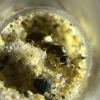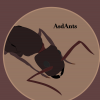I been around for almost a year now. i think i'll post my real self here on this topic as we've kind of pressed my buttons.
A short simple version, my views are actually nuanced with tons of if/then, taking far too long to write up here.
"There were red imported fire ants,"
That's not an honest statement for the word you use there, and i'd say if you think about word choice carefully, you know it.
"Imported" would suggest into the mind of any typical reader, a human willful decision to do so.
You know, like importing cane toads to Australia.
That was a wilful human effort to import an animal to a foreign land.
And is now of course famously regretted.
And honestly, nothing can be done about it now, that's just a part of the environment there these days. It is beyond the scope of us to meaningful alter it, without significant risk of doing more of the exact same sort of human error damage.
Damage that bothers us mind you, not that we did anything wrong from the cane toads' POV, they are doing great.
But that is not the history of why Solenopsis has such a world wide wide range as it has today.
From the POV of ants, and other "hitch hiker" animals we move around the globe.
We are just a force of nature. Those ants can wind up anywhere on earth from other intrinsic properties of earth besides us, like hurricanes.
All life on earth will live and thrive, anywhere it can.
Think about how we describe life.
Sometimes we say it is highly successful.
Watch any nature shows, we commonly measure that success by, how far and wide they can be found around the globe.
Interesting how some creatures that are everywhere, get praised by us for their success at living. While other creature doing nothing less or any different, are given a bad term and described as if they were willfully mean and evil somehow. Like when we "think" about this from that word's POV, we get to shift the blame for what we don't like form us to them. They were the invasive one here, must be their fault.
If spreading out to all places on earth is the measure of life's success, then it is.
If spreading out to places you were not already known to be is bad, then it is.
Fooking pick one already, it is some bs to say, doing it before we saw you do it was ok and we'll say you are a success when we find you everywhere on earth. But doing this spread out thing after we came along is not cool anymore, and we'll label you like you're out of line.
ok thanks, got that off my chest.
Edited by Full_Frontal_Yeti, February 23 2024 - 10:41 AM.






















